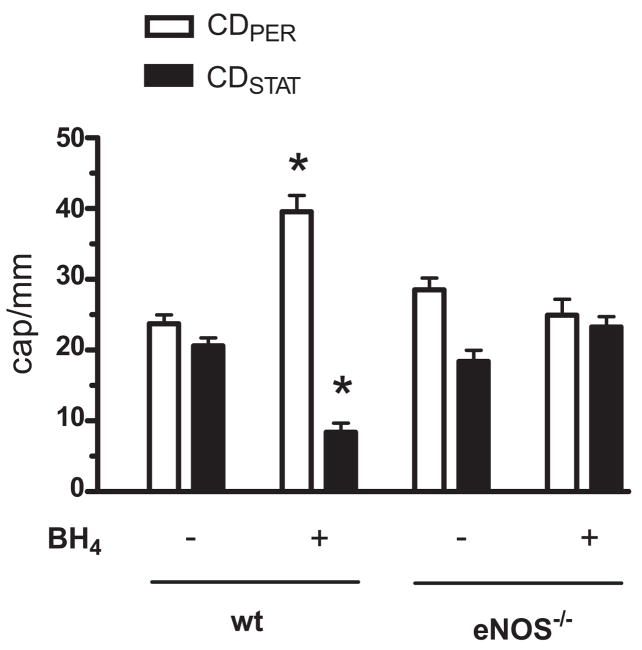Figure 7.
Effect of BH4 on capillary blood flow in EDL muscle in septic wild type and eNOS knockout mice. Between 6 and 7 hrs post-FIP, the muscle surface was periodically superfused with a 0.1 mL bolus of physiologic saline vehicle or BH4 (0.1 μmol/L) and subsequently CDPER and CD-STAT values were measured at 7 hrs post-FIP. CDPER or CDSTAT in nonsuperfused and vehicle-superfused mice did not differ and therefore were pooled into one control group (labeled as “−”). BH4 altered capillary blood flow in WT but not in eNOS−/− mice. *Significant difference from control (n = 32 and 6 mice for WT control and BH4 groups, and n = 14 and 5 mice for eNOS−/− control and BH4 groups, respectively; p < 0.05).

